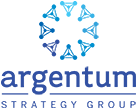Earlier this month I facilitated a two-day marketing team offsite for a technology client that went public about a year and a half ago. The company is in the midst of building their 2016 marketing plan so the CMO wanted to bring together her large, geographically diverse leadership team in one location for team building and brand strategizing.
There was some homework prior to the offsite. It included reading Building a World Class Brand. It’s an article about how Netflix built its brand and it was featured on the blog First Round Review. First Round Review is the brainchild of a San Francisco venture capital firm, First Round Capital. In this inaugural post, First Round Capital explains the goal: “To have First Round Review be the Harvard Business Review for startups.” If the Building a World Class Brand post is any indicator, they’re off to a good start.
The post, which is based on an interview with Gibson Biddle, former Netflix VP of Product Management, provides fantastic insight into how Netflix built and then continued to evolve its brand as the company has grown. Biddle identifies three key tools that are integral to his brand-building process:
- A positioning model
- A branding pyramid
- A concept summary
As a marketer, it’s always interesting to see how different people develop the messaging foundation for a brand. Biddle’s process differs from the Argentum process in that we use a 5-step positioning framework. It has proven to be a great methodology for enabling small to mid-sized companies to develop a solid foundation for their marketing. The result is a concise definition of Target, Unmet Need, Competitive Set, Unique Point of Difference and Reasons to Believe.
Exercises during the Argentum positioning session also incorporate aspects of the branding pyramid and the session typically also generates enough information to develop rough brand essence/brand personality highlights as well.
I was curious to look at how Biddle’s outcomes align with the 5-step positioning framework:
- Positioning model includes
- What is it (Competitive Set)
- What are the customer benefits (Reasons to Believe)
- What is its personality (Brand Essence)
- Branding pyramid (Unique Point of Difference/Unmet Needs) explores
- Product attributes
- Product benefits
- Emotional benefits
- Something bigger
- Concept summary (can include Unmet Need) pulls it all together
- “The goal is to put your work from you positioning and branding models into accessible sixth grade language, in order to begin a conversation with customers.”
Interestingly, the only piece that does not get explored by Biddle in this specific process is target customer definition. I’ll assume that Netflix first did extensive (and expensive) segmentation work to explore appropriate, relevant targets and market sizing.
While Biddle’s methodology was developed specifically to help fast growing technology brands, there are great lessons for companies and brands at every stage.

